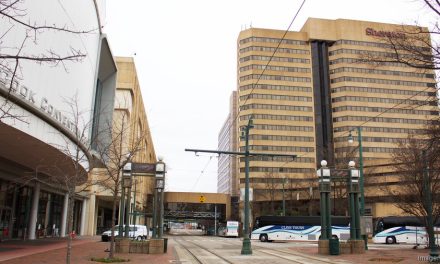The Trust for Public Land has published its latest ParkScore annual report about the park systems for the 100 most populous cities, and once again, Memphis finishes at the bottom – #93.
Memphis has been stuck at the bottom and I guess Memphians can take solace in the fact that their park system bumped up two spots. Key to the ranking is the percentage of the public that is within a 10-minute walk of a park.
It was #85 in 2016, #87 in 2019, and #95 in 2021.
ParkScore is based on five factors:
Access (18 out of 100),
Investment (29 out of 100),
Acreage (58 out of 100),
Amenities (33 out of 100), and
Equity (40 out of 100).
Other scoring: basketball hoops (30 out of 100), dog parks (29), playgrounds (16), bathrooms (20), and splashpads (32). Memphis’ highest score was 70 out of 100 for recreation and senior centers.
Total average per capita spending in Memphis for parks is $70: $44 by City of Memphis, $25 by private organizations, and $1 in monetized volunteer hours. The national average is $98 per capita with $83 coming from the city’s park agency.
Hoping for Progress
The top 10 park systems are Washington, D.C.; St. Paul, MN; Arlington, VA; Cincinnati; Minneapolis; Chicago; San Francisco; Irvine CA, Seattle, and New York City.
The bottom seven park systems are Louisville, Lubbock, Memphis, Santa Ana CA, Hialeah FL, Oklahoma City, and Fresno CA.
City of Memphis is in the midst of its $200 million Accelerate Memphis program which includes $75 million for about 15 park projects, including new construction in neighborhood parks, community centers, greenlines, splash parks and ball fields.
Hopefully, this investment will move Memphis up in the rankings, but without an increase in per capita park funding and sustained investments, it’s unlikely that the city will move out of the bottom quartile of ParkScore.
The Result of Benign Neglect
It’s no surprise at Memphis’ ranking. It has endured more than 20 years of disinvestment.
It didn’t have to be this way, but politicians blew up the Memphis Park Commission after 100 years of its leadership and at a time when the Memphis parks system was hailed as one of the best in the U.S.
The Park Commission was created in 1900 when Memphis was a star of the Progressive Era. The “Greater Memphis” movement of that time was a loose group of business and civic leaders who promoted annexation of suburban areas to the east, creation of a public water and gas utility, extension of the city’s revolutionary sewer system, and construction of a system of parks and connected boulevards to unite the new city with the old.
The ideas about parks – with the Park Commission as its vehicle – emerged following the devastating yellow fever epidemics of the late 19th century, and Memphis was so optimistic about the future that it quadrupled its size – from four and a half square miles to 16 square miles.
The Park Commission inherited a “pitiful remainder of the parks given to the people in 1819 by the founders,” the Commercial Appeal wrote.
At the time, the now revered Promenade had been reduced to 1.75 acres between Union and Monroe and was home to a five-acre city dump between Court and Jefferson.
The 2.5 acres of Court Square featured dead trees and neglect while in the care of the Police Department. An early property owner gave the Park Commission two-acre Astor Park, which would later be renamed Tom Lee Park. There were also 10 acres which had been the grounds of the City Hospital and would become Forrest Park and the five-acre home place of John Gaston, which became Gaston Park.
Putting Together The Basics
The Park Commission embarked on a remarkable plan of action. It bought Lea Woods, 335 acres, from founder John Overton’s heirs and named it East Park. (It was named Overton Park in a coupon contest conducted by the Evening Scimitar.) The Park Commission bought Wilderberger Farm’s 427 acres with 4,800 feet of riverfront and created Riverside Park (now MLK-Riverside Park).
To top it off, the park commissioners connected the two new parks with a parkway in 1902, beginning at Riverside Park in 1904 and Speedway (to become North Parkway) a year later. They hired George Kessler, one of the fathers of American urban planning, whose work in Memphis was one of the earliest efforts for comprehensive planning in the South.
In addition to the two large park projects, he was also hired to redesign and develop three of Memphis’ four original 1819 squares and the design of three new, small urban parks, including Forrest (now Health Sciences Park), Confederate (now Fourth Bluff), and Gaston.
By 1906, the Park Commission had purchased, designed, developed, and opened more than 1,750 acres of parkland.
Because of its record of success, it was justifiably considered one of the best park management and planning groups of its kind.
When Peter Harnik, then director of the well-respected Center for City Park Excellence, wrote the 2014 report, The Parks of Memphis – Past, President & Future, he cited the absence of a Park Commission as a missing piece for the Memphis park system. He wrote that a park commission responds to the lack of a “unifying vision for Memphis around which a parks vision can be layered.”
“A rigorous factual analysis of the Memphis park system bears out the anecdotal evidence that the city is below average in most park and recreation caegories compared with other large U.S. Cities,” he said.
***
Join us at the Smart City Memphis Facebook page for additional articles relevant to Memphis and Shelby County.




